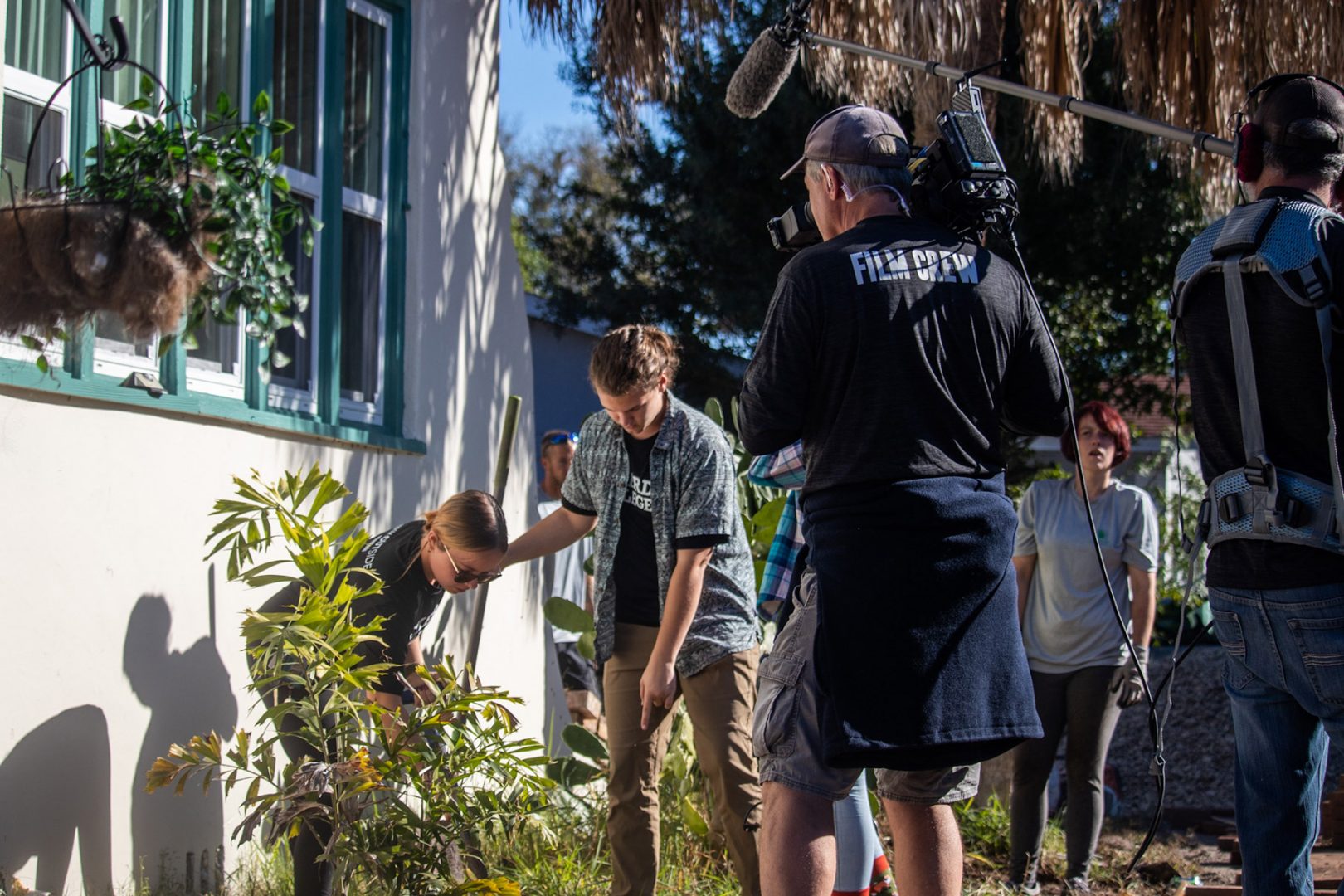In black Dri-FIT shirts emblazoned with “Eckerd College” in white across the chest, Eliza Hensel, Shyann Oglesby and Andrew Wynn followed the project foreperson to a huge landscape-plan poster mounted on a South St. Petersburg fence.
On Dec. 1, they were part of the massive crew of the TV production Flip My Florida Yard, Emmy® award–winning director Chad Crawford’s home improvement show designed to demonstrate how homeowners can create a landscape that is more in tune with Florida’s natural environment by using drought-tolerant plants and water-saving techniques.
“I was taking [Environmental Studies Instructor and Internship Coordinator David Himmelfarb’s] Food and Sustainability class when he asked if anyone wanted to join him on the project,” says Eliza Hensel, a senior environmental studies and animal studies student from Highland Park, Illinois. “I love gardening and farming. I’ve been doing it all my life …. But this is a great chance for me to learn more about how things work in the Florida ecology.”
Landscapers from around the region converged on the production, tasked with removing existing flora and replanting an entirely new front and side yard for a corner-lot home in just eight hours. Needing as many experienced hands as possible, Wilcox Nursery and Landscape’s Bruce Turley reached out to Himmelfarb to see if any Eckerd students would be interested in assisting. Himmelfarb turned to his classes and to volunteers from the Eckerd College Community Farm—turning out eight students along with Farm Manager Jon Prieto.
Andrew Wynn, a junior environmental studies and communication student from Tallahassee, says his eagerness to join the project stemmed from his curiosity about messaging. “Getting to look at the process now and then being able to watch how people perceive this through the show is really interesting,” he says.
The episode is expected to air in the spring on the Discover Florida Channel® and will be available on demand afterward on the Flip My Florida Yard website on that same channel.
Flip My Florida Yard is teamed up with the Florida Department of Environmental Protection and the University of Florida’s Institute of Food and Agricultural Sciences to promote sustainable yard culture. “Most people want an environmentally friendly yard; they just don’t quite know how to go about doing it,” Crawford says on the show’s website. “Well, this series is going to show you how to do it step-by-step.”
Once Himmelfarb and his students viewed the plan, they were handed shovels and sent off to work in the yard alongside landscaping professionals from around the region, including Alex Testa ’20, owner of Tampa Bay Native Landscapes. He learned all about Florida-friendly landscaping as an environmental studies student at Eckerd, a member of the EC Garden Club and manager of the St. Petersburg Eco Village. “We learned it in all our biology classes and Coastal Management,” Testa recalls. “It was very good preparation for what I do now, which is converting yards to drought-tolerant Florida native plants.”
Testa touts to his customers the benefits of conversion, including the fact that he hasn’t run sprinklers in his own yard the last two years.
“Honestly, I hope this show will start to inspire locals to do more native plantings, because it will show it isn’t difficult, it’s not very expensive and it saves you money,” Testa says.
Himmelfarb adds that it’s also better for the environment. “Unsustainable landscaping contributes to overuse of water and pesticides and allows invasive species to spread,” he explains. “There is a big movement toward planting primarily native species that will require less water and will attract pollinators and serve as bird habitats.”















